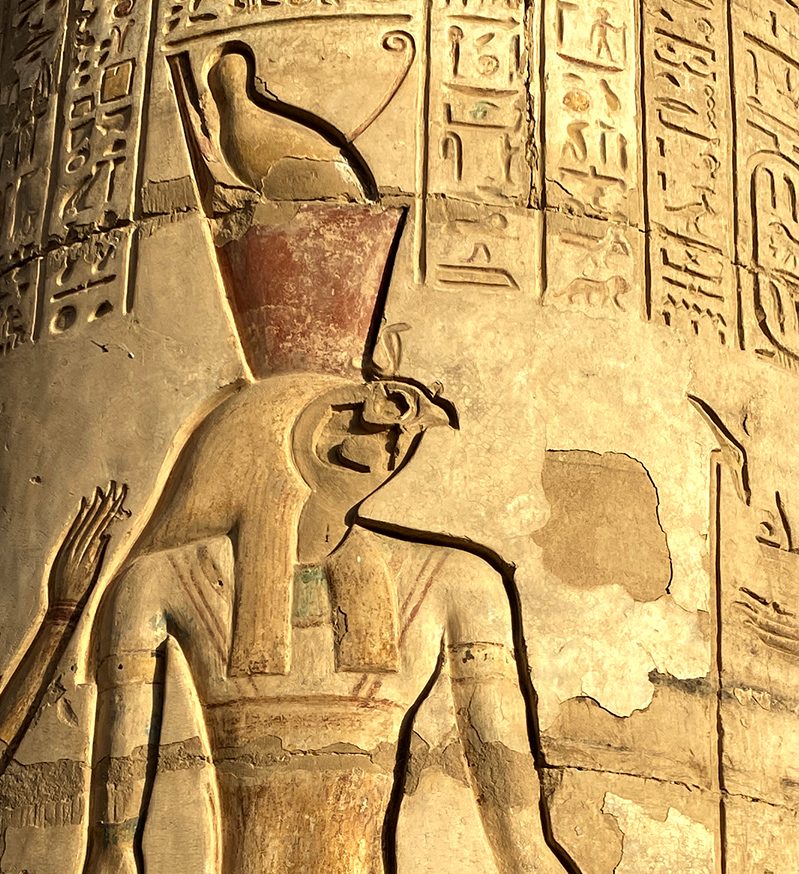Difference between revisions of "Template:POTD protected"
Occultwiki (talk | contribs) |
Occultwiki (talk | contribs) |
||
| Line 1: | Line 1: | ||
{| role="presentation" style="margin:0 3px 3px; width:100%; text-align:left; background-color:transparent; border-collapse: collapse; " | {| role="presentation" style="margin:0 3px 3px; width:100%; text-align:left; background-color:transparent; border-collapse: collapse; " | ||
|style="padding:0 0.9em 0 0;" | [[File: | |style="padding:0 0.9em 0 0;" | [[File:Horus Kom Obo.jpg|300px|thumb|]] | ||
|style="padding:0 6px 0 0"| | |style="padding:0 6px 0 0"| | ||
'''[[ | '''[[Horus]]''' is one of the most significant ancient [[Egyptian religion|Egyptian deities]] who served many functions, most notably as god of kingship and the sky. He was worshipped from at least the late prehistoric Egypt until the Ptolemaic Kingdom and Roman Egypt. Different forms of Horus are recorded in history, and these are treated as distinct gods by Egyptologists. | ||
The [[Pyramid Texts]] describe the nature of the pharaoh in different characters as both Horus and [[Osiris]]. The pharaoh as Horus in life became the pharaoh as Osiris in death, where he was united with the other gods. New incarnations of Horus succeeded the deceased pharaoh on earth in the form of new pharaohs. The lineage of Horus, the eventual product of unions between the children of Atum, may have been a means to explain and justify pharaonic power. | |||
Revision as of 17:06, 20 April 2023
|
Horus is one of the most significant ancient Egyptian deities who served many functions, most notably as god of kingship and the sky. He was worshipped from at least the late prehistoric Egypt until the Ptolemaic Kingdom and Roman Egypt. Different forms of Horus are recorded in history, and these are treated as distinct gods by Egyptologists. The Pyramid Texts describe the nature of the pharaoh in different characters as both Horus and Osiris. The pharaoh as Horus in life became the pharaoh as Osiris in death, where he was united with the other gods. New incarnations of Horus succeeded the deceased pharaoh on earth in the form of new pharaohs. The lineage of Horus, the eventual product of unions between the children of Atum, may have been a means to explain and justify pharaonic power.
Photographer: Travis McHenry |
